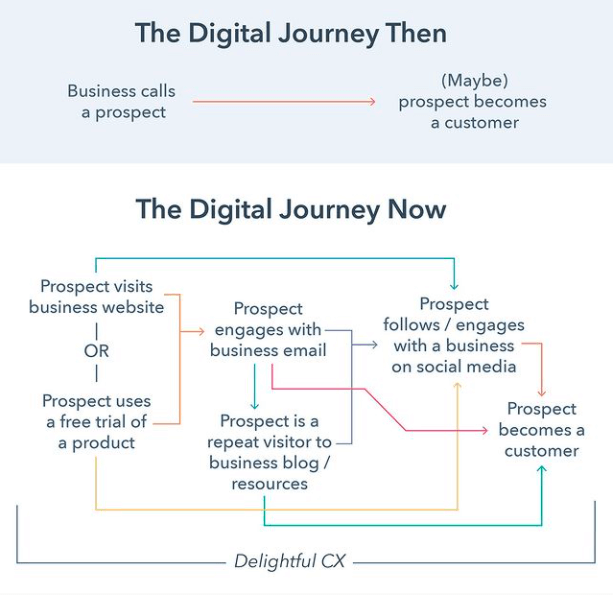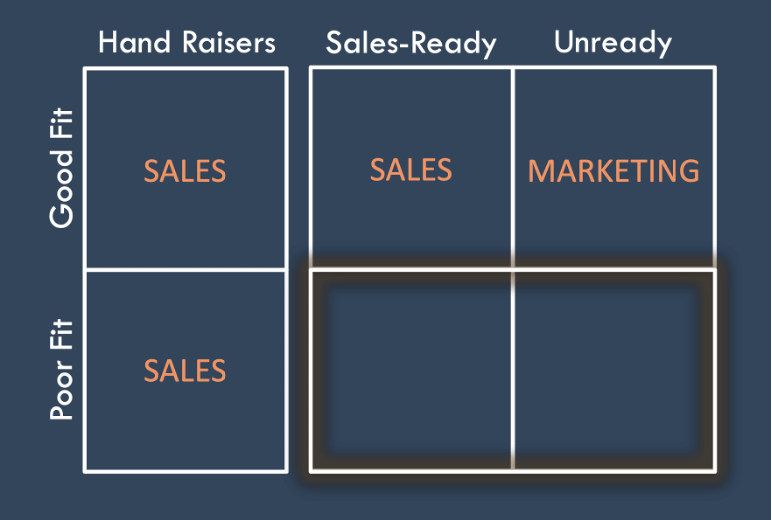Is your organization struggling from a lack of sales and marketing alignment? That can be a difficult question to answer. Try these instead:
- Do your sales and marketing teams frequently disagree on data, definitions, and goals?
- Does your marketing team produce content that sales reps never use?
- Is your customer and lead data siloed, disorganized, and hard to use or understand?
- Do leads often get dropped between marketing and sales?
If you answered “yes” to one or more of these questions, you’re definitely dealing with alignment issues. Conveniently, you’re reading this post and taking the first step toward learning how to align sales and marketing strategies.
Why is Sales and Marketing Alignment Important?
The better question may be, “Why is sales and marketing alignment important now?” Some solidarity between the two departments could have been helpful five years ago too, but it’s mandatory for success today. Increased competition and tightening budgets have made the inefficiencies that come from a lack of alignment fatal to revenue growth, business expansion, and increasing market share.
Marketing and sales alignment = Success! Organizations that prioritize sales and marketing alignment are almost 300% more likely to exceed customer acquisition goals.
Siloed processes — where marketing owns the top of the funnel and passes leads to sales when they reach the bottom — don’t work with the modern customer journey. Your customers engage with your brand in a variety of ways long before they’re ready to talk to you, and they expect a seamless customer experience. Clunky handoffs and overlapping communications can destroy a prospect’s perception of your company and cost you a sale.

Image source: https://www.facebook.com/hubspot/posts/10159479850589394
Talk About a Pain Point! Only 35% of organizations report strong alignment between their sales and marketing teams. Ouch. Sales and marketing teams don’t have access to each other’s data or a single source of truth — and it’s leading to a disconnect between teams.
4 Sales and Marketing Alignment Best Practices
The first step toward aligning sales and marketing strategies is understanding what’s keeping your teams so far apart. Common causes of sales and marketing misalignment include:
- Working toward different goals
- Lack of effective communication
- Use of different tools between teams
- Disorganization and a lack of training
With those issues in mind, let’s examine some strategies for how to align sales and marketing.

1. Agree on Unified Goals
Technically, sales and marketing teams are working toward the same goal: increasing customers and revenue. However, their strategies are fundamentally different, and this can lead to a lack of sales and marketing alignment.
- Marketers often work on long-term projects, with their focus on increasing brand awareness and nurturing prospects
- Sales teams tend to have more short-term targets, like quarterly quotas and addressing prospect concerns and roadblocks to close deals
Agreeing on set metrics or key performance indicators can help ensure that both strategies are geared toward producing the same outcome.
2. Align on Lead Qualification
Lead scoring and qualification plays a major role in aligning sales and marketing teams. If the two groups don’t agree on what constitutes a qualified lead, tension and frustration are inevitable.
Hubspot research shows only 9.1% of sales representatives say they receive high-quality leads from marketing and just 28% of salespeople say marketing is their best source of leads.
A lead qualification matrix can help ensure that both marketing and sales teams have the same definition of a qualified lead. It organizes prospects based on their fit and readiness using hard data and mutually agreed-upon definitions, giving sales teams the ability to prioritize leads and marketers a clear understanding of when to hand prospects off to sales.

3. Connect with Shared Technology
An estimated 90% of today’s B2B buyer’s journey happens before potential buyers contact a salesperson. That may sound like a challenge — customers know far more about you than you do about them by the time you engage with them directly. But it can also be a benefit: all that online research prospects are doing creates a deluge of data you can use to develop a clear picture of their pain points and goals.
But that valuable data goes to waste if sales and marketing teams can’t access, analyze, and share it seamlessly. These tools in the sales and marketing technology stack can help build sales and marketing alignment.
4. Organize and Empower Everyone
A robust sales enablement strategy is the final piece of the puzzle that is sales and marketing alignment. While sales enablement is often jointly owned by sales and marketing, it can also be a neutral stakeholder that can help keep communication and collaboration running smoothly.
Use a sales enablement framework to:
- Ensure sales representatives are trained on how to use content to maximum effect
- Coordinate and organization content library, including insights from the sales team
- Reduce duplicate efforts associated with last-minute edits, lost assets, and overlooked performance data
Achieve Sales and Marketing Alignment with TPM
Is a lack of marketing and sales alignment hurting your lead-generation and growth efforts? The experts at TPM work with both sales and marketing teams to streamline your efforts across the entire buyer journey. We can help you increase traffic, nurture leads effectively, and drive sales, revenue, and organizational growth. We work with companies and budgets of all sizes — contact us to learn more about how we can help you.
Enjoyed this read?
See our full collection of Sales Enablement blogs to close more deals, faster!


















